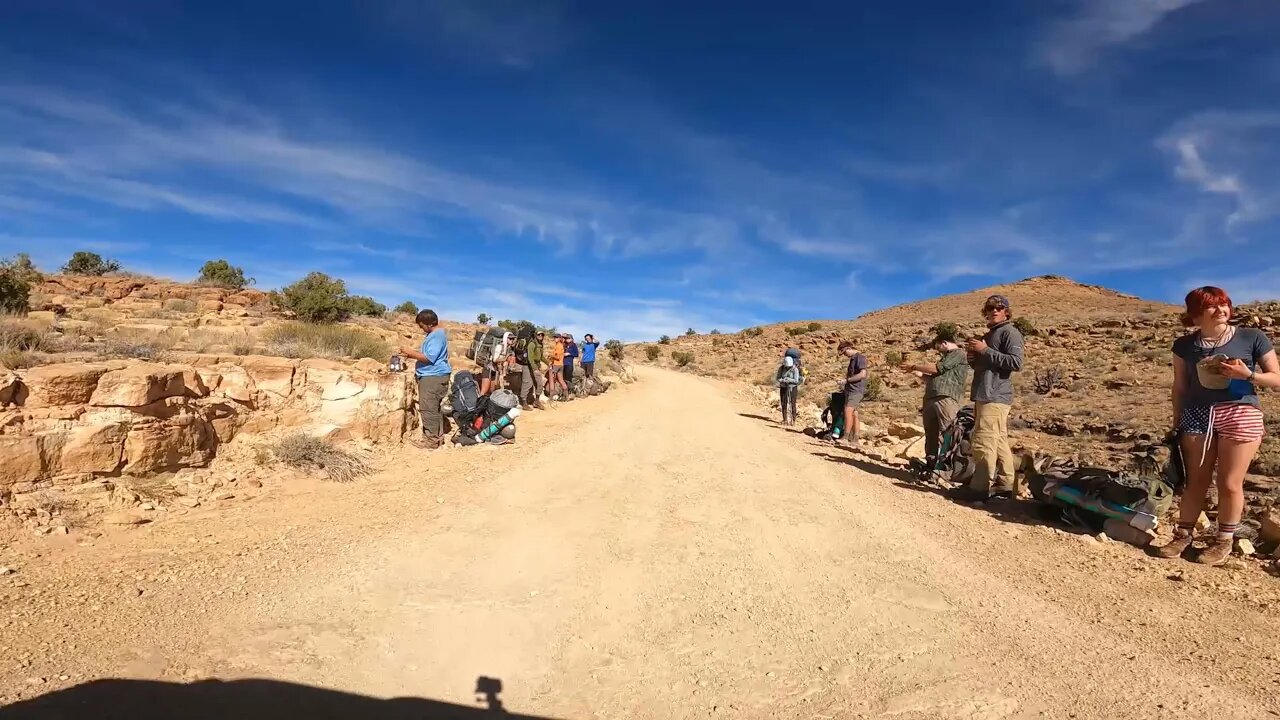Premium Only Content

Reds Canyon Loop Part 3 - Lower San Rafael Swell
"Reds Canyon Loop" is an incredibly gorgeous trail in the south end of the San Rafael Swell in Central Utah. Starting at a high elevation, you can see the beautiful canyon that you will be descending into. Once in the canyon, you can see where the trail gets its name. Winding through the red cliffs, you will wish you could spend days down here. As you exit the trail to the north, you are treated with more spectacular views of the surrounding areas. This is an absolute must do in the Swell!
Highest Elevation: 6905 Ft
Length: 26 Miles
Road Conditions: Graded Dirt/Gravel
Road/Trail Difficulty: B-Easy
Emery County Road: 1019
Baptist Draw Overlook
I have no information on the road out to the overlook but, Baptist Draw is often touted as one of the best beginner friendly canyons in the San Rafael Swell for "Canyoneering". A short approach, coupled with great narrows, easy down-climbs, and straight forward rappels make this a winner. It doesn't hurt that it has some of the deepest, darkest narrows in the Swell. Baptist draw is not typically a hiking trail but here is a link to a YouTube video of a gentleman doing a hike at least initially https://youtu.be/ir7ETbj-LvY. It is considered a class 3 "Canyoneering" route requiring appropriate gear and skills including ropes for rappelling. Baptist Draw has 4 rappels, ending in a fun 80 ft rappel into Upper Chute Canyon. Upper Chute and the ascent out is a beautiful but very, very long. After leaving the canyon is where a map and navigation skills come into play finding your car. Also, Baptist Draw is NOT a good canyon to do in the winter. With a large drainage area, it can hold mud and water for long periods. Couple that with cold temperatures and the short days of winter, and you have a recipe for disaster. Many of the accidents have been cold water and/or short day related. Save this canyon for spring, summer, or fall. Because of the large drainage area, it has a very high flash flood danger. Do not enter if rain is in the forecast. Please reference the following link to AllTrails.com to get more info: https://www.alltrails.com
The San Rafael Swell, however, is an enormous geologic feature, located on 2,000 square miles of BLM land slightly southeast of the center of Utah. The Swell is bisected by Interstate 70; otherwise, it hardly contains a trace of man. It is a vast, open, remote landscape dotted by the mesas and rock towers that are the quintessential formations of the Utah desert. Explore it up close on the network of roads south of I-70 within the Swell, like McKay Flat and Hondu Arch Roads.
To get to McKay Flat Road and then to Hondu Arch Road — which leads to the impressive Hondu natural arch on the west side of the southern Swell — take Temple Mountain Road (Exit 131 off of I-70). There will be several junctions with smaller roads along the way — stay on the main road. After about 10 miles you’ll reach the junction of Heart of Sinbad Road, where you will continue west. About 3.5 miles later, you will reach McKay Flat Road. From here, it is 18 miles to the Hondu Arch. Continue south until McKay Flat Road intersects with Hondu Arch Road, which you will take to the west.
The journey will take you past fierce, beautiful landscapes with rock towers, mesas, and arches that expose the colorful rock layers of the Swell, from the limestone and sandstone of the Permian, to the shale and mudstone of the Cretaceous. You will also pass by one old uranium mine before reaching a stunning view of the Hondu (also spelled “Hondoo”) Arch, a keyhole formation at the road’s end.
When they are in good condition these roads are fit for passenger cars — but check out the current conditions and the weather report before you go because storms can render them impassable. Remember that if something goes wrong you could be a long way from help: make sure your car is running well, that you’ve got a full tank of gas, and bring a good map. Also, watch out for grazing cattle (sometimes they hang out on the roads). Otherwise, enjoy the seemingly otherworldly scenes of the Swell — as well as the solitude of the desert.
-
 1:31:00
1:31:00
Kim Iversen
3 hours agoAre The "Fat Generals" Just A Cover For War With Iran?
25.9K77 -
 DVR
DVR
The Trish Regan Show
2 hours ago🚨 BREAKING: TRUMP'S REVENGE! MASS FIRINGS in RETALIATION for Schumer-Schiff Led Govt Shutdown!
10.8K5 -
 1:04:55
1:04:55
TheCrucible
4 hours agoThe Extravaganza! EP: 45 (9/30/25)
70.6K10 -
 51:44
51:44
Candace Show Podcast
3 hours agoDEAD OR ALIVE: Who Betrayed Charlie Kirk? | Ep 245
63.3K182 -
 1:40:32
1:40:32
Redacted News
4 hours ago"This was 100% a CIA hit!" Charlie Kirk's Assassination Story COLLAPSES Amid New Evidence | Redacted
133K181 -
 39:40
39:40
The White House
5 hours agoPresident Trump Signs Executive Orders, Sep. 30, 2025
52.4K45 -
 1:06:26
1:06:26
vivafrei
6 hours agoLive with Alexa Lavoie! ANTIFA in Canadian Government? RCMP the New Gestapo? AND MORE!
159K46 -
 40:38
40:38
Dad Saves America
1 day ago $1.70 earnedLeft Is Right, Up Is Down: The Overton Window Has Been Shattered
32.2K5 -
 LIVE
LIVE
LFA TV
21 hours agoBREAKING NEWS ALL DAY! | TUESDAY 9/30/25
626 watching -
 1:41:28
1:41:28
freecastle
8 hours agoTAKE UP YOUR CROSS- May the forces of evil become confused on the way to your house.
25.7K4